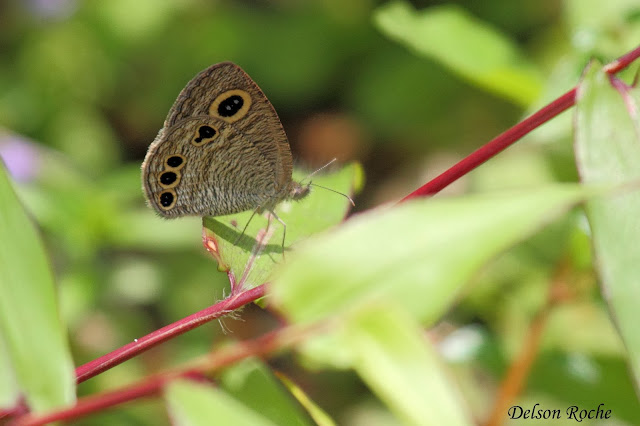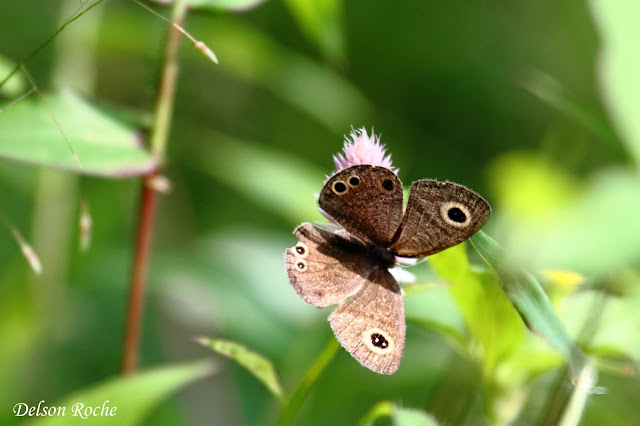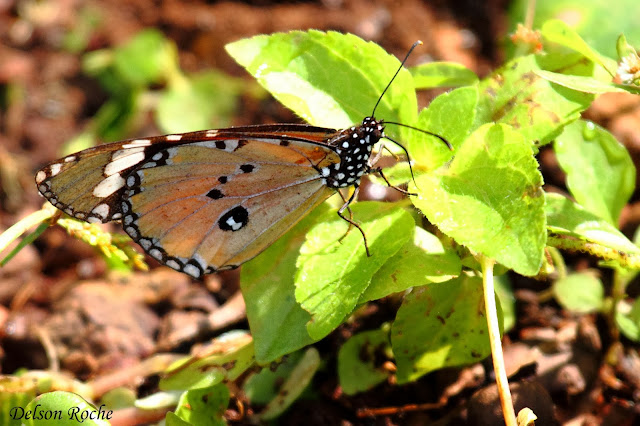I have never measured it, but this Blue Mormon (Papilio polymnestor ) is probably the biggest butterfly in our garden.
It is one of the most handsome butterflies, with blue flashing colour on its wings. It is bigger than some of the birds that visit us. The only plant that it visits in our garden is a Ixora bush. It takes about five minutes to visit all the flowers on that bush and after that it is gone.
I had featured a Common Mormon as a second butterfly in the series, the question I asked my self is- Why were these butterflies named Mormon, i.e. after a American religious group. A bit of digging I came up with this tit-bit. Harish Gaonkar, of the Natural History Museum in London, recently wrote that "the origins of giving common English names to organisms, particularly butterflies for tropical species started in India around the mid 19th century . . . The naming of Mormons evolved slowly. I think the first to get such a name was the Common Mormon (Papilio polytes), because it had three different females, a fact that could only have been observed in the field, and this they did in India. The name obviously reflected the . . . Mormon sect in America, which as we know, practiced polygamy."
Interesting theory I must admit.






















